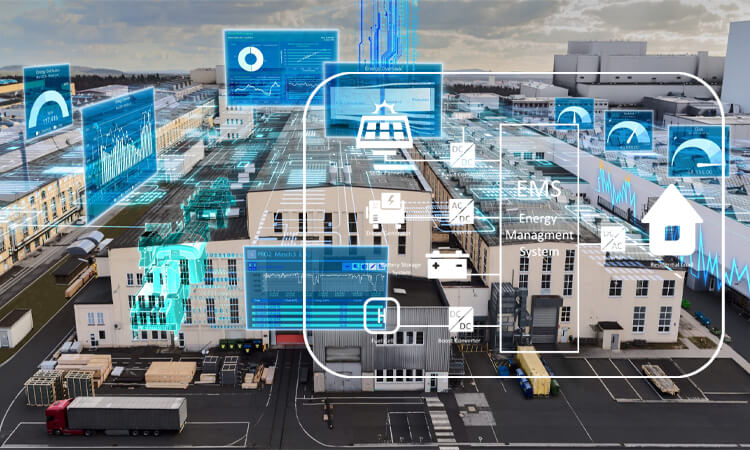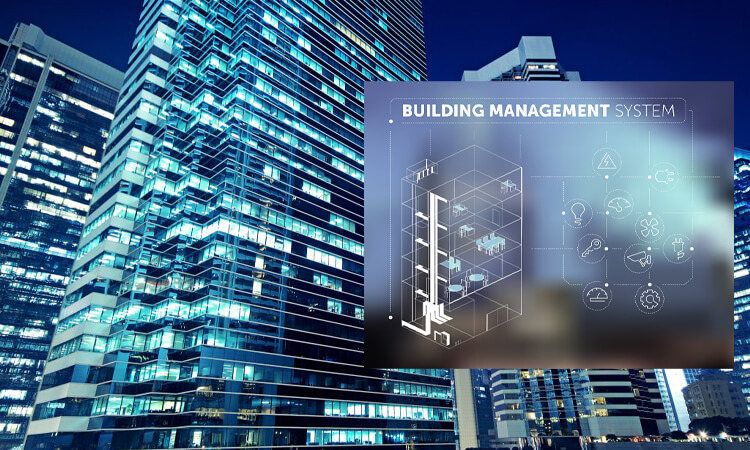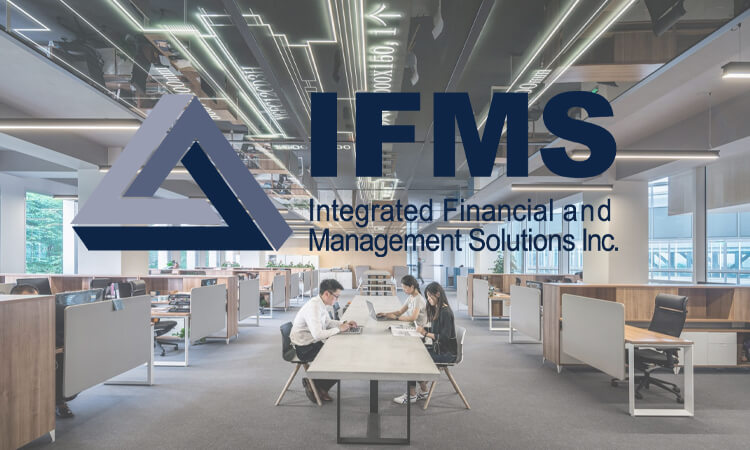Intelligent building management systems (IBMS) are a type of technology. It helps to optimize the operation and maintenance of a building. These systems use sensors, control systems, and data analytics to track and control various aspects of a building’s performance. Including energy usage, lighting, HVAC, security, and more. By automating many of the tasks associated with building management, IBMS can reduce energy costs. It can improve occupant comfort and enhance the overall efficiency of a building.
What is an Intelligent Building Management System?
IBMS is a comprehensive system that integrates various building systems. This technology provides occupants with a smarter, more efficient, and more comfortable environment. It includes hardware, software, and networking components that track and control various building functions.
You can use IBMS for various commercial, residential, and industrial buildings. It can be customized to meet the specific needs of each building. It also allows you to integrate it with other smart technologies, such as smart home systems, security systems, and energy management systems.
How does an IBMS Work?
IBMS typically consists of three main components: sensors, control systems, and data analytics. Sensors are installed throughout the building to collect data on various aspects of building performance. Such as temperature, humidity, and energy usage. This data is fed into a control system, which uses algorithms to analyze the data and adjust the building’s systems as needed.
IBMS uses sensors and data analytics to track the performance of various building systems and equipment. It can detect issues like energy waste or equipment malfunctions and provide real-time alerts to building managers.
The IBMS also includes automation features that you can program to take specific actions based on certain conditions. For example, if the temperature in a building exceeds a certain threshold, the IBMS will respond. It can automatically adjust the HVAC system to bring it back to a comfortable level.
Intelligent Building Management System Key Components
Several key components make up an Intelligent Building Management System, including:
- Sensors: Sensors gather data from various building systems and equipment. Such as temperature, humidity, and energy consumption.
- Control Systems: Control systems manage and automate various building functions. Such as lighting and HVAC.
- Networking Components: Networking components, such as routers and switches. It connects all the components of the IBMS and allows for communication and data exchange.
- Software: Software is used to analyze the data collected by the sensors. It makes decisions about optimizing the performance of various building systems.
Intelligent Building Management System Types
There are several different types of IBMS, each with unique features and capabilities.
Energy Management Systems (EMS)

EMS optimizes energy usage and reduces energy costs. EMS may include real-time energy monitoring, demand response systems, and energy conservation measures.
Building Automation Systems (BAS)

BAS is designed to control and track various building systems and technologies, including lighting, HVAC, and security. BAS may also include features like occupancy sensors and energy management systems.
Integrated Facility Management Systems (IFMS)

IFMS is used to manage and optimize the overall operation of a building or complex. People would more commonly use functions such as asset management and maintenance scheduling.
Computerized Maintenance Management Systems (CMMS)

CMMS is useful in helping set up managers to track and schedule maintenance tasks. You can use it to track inventory and other assets.
IBMS VS BMS VS BAS
| Feature | IBMS (Integrated Building Management System) | BMS (Building Management System) | BAS (Building Automation System) |
|---|---|---|---|
| Definition | A system that integrates various building systems into a single platform for centralized control and management. | A system that controls and monitors the building’s mechanical, electrical, and plumbing (MEP) systems. | A system that automatically controls and optimizes a building’s various systems, such as lighting, HVAC, and security. |
| Functionality | Provides a centralized view of all building systems, allowing for easier management and optimization. | Controls MEP systems, including heating, ventilation, air conditioning (HVAC), lighting, and other equipment. | Automates the control and optimization of various building systems to increase energy efficiency and reduce operating costs. |
| Key Components | Sensors, controllers, software, and communication protocols to integrate various building systems. | Sensors, controllers, and software to monitor and control MEP systems. | Sensors, controllers, and software to automatically control and optimize building systems. |
| Benefits | Improved energy efficiency, reduced operating costs, increased occupant comfort and safety, and easier maintenance and troubleshooting. | Improved energy efficiency, reduced operating costs, increased occupant comfort and safety, and easier maintenance and troubleshooting. | Improved energy efficiency, reduced operating costs, increased occupant comfort and safety, and automated system control and optimization. |
| Examples | Honeywell Enterprise Buildings Integrator, Siemens Desigo CC, Johnson Controls Metasys | Schneider Electric EcoStruxure Building, Tridium Niagara, Siemens Apogee | Honeywell Building Manager, Johnson Controls Facility Explorer, Schneider Electric SmartStruxure |
EMS VS BAS VS IFMS VS CMMS
| Feature | EMS (Energy Management System) | BAS (Building Automation System) | IFMS (Integrated Facilities Management System) | CMMS (Computerized Maintenance Management System) |
|---|---|---|---|---|
| Definition | A system that monitors, controls, and optimizes energy usage within a building or facility. | A system that automates the control of building systems such as HVAC, lighting, and security. | A system that integrates facility management and security functions into a single platform for centralized control and management. | A system that automates the management of maintenance activities and schedules for equipment and assets. |
| Functionality | Tracks energy usage, analyzes energy data, and recommends energy-saving measures to reduce operating costs. | Controls building systems to optimize energy usage, reduce operating costs, and improve occupant comfort and safety. | Integrates facility management and security functions such as access control, video surveillance, and fire detection into a single platform for easier management and increased security. | Manages maintenance activities such as scheduling preventative maintenance, tracking work orders, and managing inventory of spare parts. |
| Key Components | Sensors, controllers, software, and communication protocols to monitor and control energy usage. | Sensors, controllers, and software to automate the control of building systems. | Access control systems, video surveillance systems, fire detection systems, and software to integrate and manage facility management and security functions. | Asset management software, work order management software, and inventory management software to automate maintenance activities. |
| Benefits | Reduced energy usage and operating costs, increased energy efficiency, and improved sustainability. | Improved occupant comfort and safety, reduced operating costs, and easier maintenance and troubleshooting. | Increased security, easier management of facility functions, and reduced operating costs. | Improved maintenance efficiency, increased equipment lifespan, and reduced downtime. |
| Examples | Siemens Navigator EMS, Schneider Electric EcoStruxure EMS, Honeywell Energy Manager | Honeywell Building Manager, Johnson Controls Metasys, Siemens Apogee | Tyco C-CURE, Johnson Controls P2000, Bosch Building Integration System | IBM Maximo, eMaint CMMS, UpKeep CMMS |
Intelligent Building Management System Benefits
There are many benefits to implementing an IBMS in a building. Some of the most significant benefits include the following:
- Improved energy efficiency: IBMS can monitor and control energy use in real time. It can help companies optimize their energy consumption and reduce costs. IBMS can help to optimize the energy consumption of a building by controlling and monitoring systems such as lighting and HVAC.
- Enhanced occupant comfort: IBMS can help improve the comfort and productivity of occupants. It is done here primarily by monitoring and adjusting temperature, lighting, and other aspects of the built environment. It can also reduce noise levels by controlling building systems and equipment.
- Improved maintenance and asset management: IBMS alerts administrators to problems before they occur. Administrators can identify and resolve maintenance issues before they become more serious problems. It can help extend building assets’ lifespan and reduce repair costs.
- Enhanced security: IBMS can help to improve the security of a building by integrating with security systems. Such as surveillance cameras, access control, and alarms. It can also alert building staff to potential security issues.
- Productivity: IBMS can improve the productivity of occupants by providing a comfortable and safe environment. It can also help reduce downtime by proactively identifying and addressing building systems and equipment issues.
- Greater Control: IBMS allows building owners and facility managers to have greater control over the systems and functions of a building. It can be accessed remotely, allowing users to adjust and track performance anywhere.
Key Players in the IBMS Market
Many companies offer IBMS products and services. Some of the key players in the market include:
- Siemens is a global leader in the IBMS market, offering various products and services for buildings of all sizes and types.
- Johnson Controls is another major player in IBM’s market. The technology offers various products and services for commercial, industrial, and residential buildings.
- Honeywell is a well-known provider of IBMS products and services. They offer solutions for energy management, building automation, and other applications.
Case Studies
There are many examples of IBMS being successfully implemented in buildings worldwide.
The DePaul Center
DePaul Center, a multipurpose facility in Chicago, Illinois, implemented an IBMS. It helped reduce energy consumption by 30% and saved over $1 million in energy costs over five years.
The Empire State Building
As mentioned before, the Empire State Building implemented an IBMS system. This technology has helped them reduce their energy consumption by 38%. They also saved over $4.4 million in energy costs in the first two years.
The Bank of America Plaza
The Bank of America Plaza in Tampa, Florida, also implemented IBMS. With the help of this technology, they have reduced their energy consumption by 24%. They also saved over $1 million in energy costs over three years.
The University of California, San Diego
The University of California, San Diego, implemented the only IBMS system in the region. This system has allowed them to reduce their energy consumption by 25%. It also saved them more than $1.3 million in energy costs in the first year alone.
Challenges and Considerations
While IBMS offers many benefits, there are also some challenges and considerations to consider when implementing these systems.
- Cost: Implementing an IBMS can be expensive, especially for larger buildings requiring extensive renovations to accommodate the new technology.
- Complexity: IBMS are often complex systems. Therefore specialized expertise is required to install and maintain them. This can be a challenge for building managers who do not have a technical background or need more resources to hire extra staff with the necessary expertise.
- Integration: IBMS typically requires integrating various building systems and technologies, which can be complex and time-consuming. Building managers may need to work closely with various vendors and contractors to ensure that everything is properly integrated and working together smoothly.
- Data privacy: As IBMS collects and stores large amounts of data, there are concerns about data privacy and security. Building managers should be aware of these issues and take steps to ensure that personal data is collected and stored securely.
Choosing the Right IBMS for Your Building
There are several factors to consider when you choosing an IBMS for your building. You need to consider some important factors.
- Cost: As mentioned above, implementing an IBMS can be expensive. So it is important to carefully consider the costs associated with different systems and choose one that fits your budget.
- Compatibility: Make sure that the IBMS you choose is compatible with your building’s existing systems and technologies.
- Scalability: Consider whether the IBMS can be easily expanded or adapted as your building’s needs change over time.
- Support: Look for an IBMS with comprehensive support and training resources to help you get the most out of the system.
The Future of Intelligent Building Management Systems
As technology advances, IBMS will become even more sophisticated and capable of optimizing building performance in new and innovative ways. Some of the key trends to watch in the coming years include:
- Increased automation: IBMS is likely to become more automated in the future. More tasks will be handled by the system rather than by human operators.
- Greater integration: IBMS may become more integrated with other building systems and technologies. Such as security and occupant tracking systems.
- Greater use of data analytics: IBMS are likely to use data analytics to improve building performance and efficiency.
- Increased use of renewable energy: Concerns about the environment continue to grow. IBMS will likely play a greater role in helping buildings transition to renewable energy sources.
An intelligent building management system is a modern technology. You can use it to control and manage various building systems to optimize the performance and efficiency of your building. It offers many benefits, including energy efficiency, comfort, security, and productivity. With its ability to track and control various building functions, IBMS is set to be a key component of future smart buildings.










